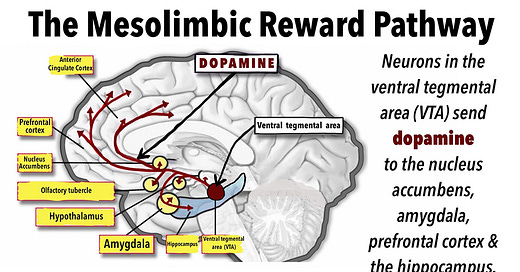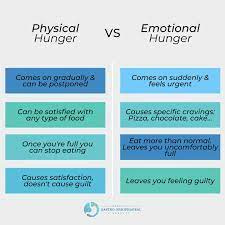We are living in “crazy times” with many uncertainties about our future. The external world is changing, with the old matrix ways of doing things and beliefs no longer sustainable. This necessitates internal adaptation and transmutation within our environment, hopefully, to something better. This adaptive transition requires physical, emotional and spiritual energy. As biological beings, food is one source of that needed energy that helps us to survive and cope with change. We eat to satisfy both physical and emotional needs.
Motivations For Eating
Most of us want to be healthy, physically fit, and of normal weight. And we know that how much and what we eat is key to those objectives. So why do we succumb to the pull of over-eating or to eating poor quality foods when we logically know better? Many people with successful educational achievements and careers seem totally powerless at times over items such as chocolate, potato chips or calorie laden beverages, as though spinning out of control. There are biological systems influencing this process. And all of our behaviors are carried out for some positive intent, even if for subconscious reasons or outwardly harmful.
There are two primary physical systems that influence our drive to eat. The first is the homeostatic, or metabolic system, that balances energy (caloric) intake and output. Its command center is located in the hypothalamus of the brain, which receives signals from the peripheral body concerning available nutrients and fuel, derived from the gastrointestinal tract and fat tissue. The job of the hypothalamus is to regulate appetite to achieve homeostasis, or balance in the body. Although this metabolic system is vital for survival, it does not work alone.
The second physical system is known as the hedonic, or pleasure-reward system. Many of us sometimes eat in the absence of physical hunger (metabolic need) and in spite of large fat storage or body fat. We commonly refer to this as emotional eating. Our brains are hard-wired to seek pleasure as essential for survival from the time of our ancestors, because those with the strongest desires to seek food procreated and passed on their genetic lineage.
The hedonic system of the brain is located in the meso-limbic system. Neuro-imaging has proven that all it takes is one smell, sight, taste or emotional trigger to release a brain chemical called dopamine that stimulates a drive to eat something that instantly feels good. The release of dopamine is believed to coordinate many aspects of food reward, including increased arousal and attention, psychomotor activation, and conditioned learning or habitual automated responses.
Modern day food producers exploit our hedonistic drives using sugar, fat and salt as we try to feel better and eat emotionally to relieve stress or seek comfort. Alcohol and drugs of abuse do the same. Many research studies show links between food and drugs. As an example, the opiate suppressive drug, Naloxone, can block and counter the effects of binge eating. This is why emotional eating can feel like a food addiction.
Our patterns of eating over time creates neural pathways in the brain, forming habits and automated behavior that may not be easy to change. We actually re-wire the brain to promote compulsive eating by overloading the brain's dopamine pleasure center. This process decreases sensitivity to dopamine, down-regulating the mesolimbic reward system common to addiction networks.
Compulsive eating or drinking patterns are then created, in order to regain a sense of reward. Our braking systems for eating are weakened and we can develop tolerance, getting less reward until we increase the amount of food. And unfortunately, people can experience temporary somatic signs of withdrawal when they cut back. This is why people may complain that cutting down on carbohydrates makes them feel shaky, tired or depressed.
The food industry tends to point a finger at the consumer, blaming them for lack of control. But food manufacturers have exploited our natural drives by tweaking their products to load them with hidden sugar, fat and salt with the precise amounts necessary to make them very tasty and palatable. This is one reason why eating processed foods can be risky. The consumption of highly processed and refined foods can trigger an excessive release of dopamine with calculated amounts of combined ingredients to reach a bliss point. Grocery stores typically devote a large amount of centralized space to highly profitable sweet beverages, salty snacks, and dessert items.
Foods That Trigger Dopamine
The concentrations of sugar and fat in many processed foods are not found in natural, whole foods. Natural foods also contain other more nutritious substances such as fiber, vitamins and trace minerals. Not all carbohydrates and fats are created the same, having different metabolic effects. The quality of food depends on the nutrients such as fiber, the glycemic index, the chemical formulation, and how they affect the hormone balance in the body.
Animal research has shown that subjects will work very hard for foods combining fat and sugar, and even more so when salt is added in. We all know what happens when we eat a hamburger, French fries and a soda at a fast-food restaurant. Withdrawal symptoms from diets high in sugar can occur, but is not seen with switching to lower fat diets in animal research studies.
Carbohydrates and Sugar
The refining of simple carbohydrates into sugar allows for rapid digestion and absorption quickly dumped into the bloodstream, which alters our brain chemistry and mood. Carbohydrates increase the concentration of an amino acid called tryptophan in the brain. Tryptophan is a building block of serotonin, a chemical transmitter that gives you feelings of calmness and happiness. When you eat simple carbohydrates contained in most sweets, your brain is flooded with serotonin. In other words, the food itself is triggering the reward feel good center in your brain. For a short time, you feel fantastic. It's a form of emotional eating for self-love through food.
As a way of increasing sales, food manufacturers lace foods like yogurt and spaghetti sauce with sugar and can contain more sugar per serving than sweetened cereal. Complex carbohydrates takes longer and more energy to digest so have a lower glycemic load. In the US, about 50 percent of excessive caloric intake is associated with sweetened beverages. These are empty calories without nutrition, do not provide the same amount of satiety as solid foods, are easy to consume even without hunger, and replace necessary water. Sweetened beverages are well known to increase the risk of metabolic syndrome, a precursor to diabetes. Large intake of sugar is also associated with cardiovascular disease, such as hypertension.
Fats
Fat enhances the palatable aspects of flavor, texture, and aroma of many foods. It helps to merge and smooth the ingredients of a mixed food source, as well as extending the shelf life of products. Fat aids in the absorption of Vitamins A, D, E, and K and phytochemicals such as beta-carotene. Fat helps to maintain the integrity of skin and cell membranes. It synthesizes multiples chemicals and hormones in the body. The brain is 60 percent fat by weight. Although we don't taste fat directly, it is included in most comfort foods that we binge on because it adds to the bliss point. Fat consumption can decrease sad feelings by 50 percent on the magnitude of anti-depressant medications.
Fat has twice the caloric load of 9 calories per gram compared to 4 calories for carbs and protein. However, low fat diets tend to cause people to gain weight because the fat is replaced with processed carbohydrates. Furthermore, the missing fat provided a sense of fullness and satiety. We need healthy fats, such as olive oil, in order to get sufficient amounts of essential fatty acids.
Salt
Salt, sodium chloride, is essential for normal body function. It maintains fluid balance, helps transport nerve impulses, and is important for contraction and relaxation of muscles. It brings out the flavor of foods, maintains food moisture, enhances texture such as crispness, and increases thirst. The problem with salt is consumption in excess of what we need. When health care providers recommend low salt diets for hypertension, that does not mean no salt.
The food industry considers the right amount of salt as a magical ingredient that provides a cheap burst of flavor and is the easiest way to make low nutrient foods palatable. Obesity researchers believe that salty foods have contributed to the obesity epidemic in the US by making poor quality foods taste good. And once we get used to the taste of high sodium foods, other foods taste bland. Beyond obesity, excessive salt consumption is directly associated with hypertension. Statistics reveal that 75-80 percent of sodium in typical American diets comes from processed foods and not what is added during food preparation or consumption.
Tips For Changing Eating Patterns
How we eat, the choices we make, and the motivation to change habits is multifactorial. Physical and emotional drives, along with industrial marketing influences, have been described above. Additional factors include belief systems, self-esteem, body image, physical activity levels, socioeconomic and cultural influences, family history, internal dialog and thoughts, and willingness to change. Modifying weight, body size and fitness requires sustained commitment and effort.
Many people do not understand the mechanics of change, and thus fail to change unwanted habits from desire alone. Readiness for change is an important aspect of modifying eating habits that makes the effort exerted worthwhile. Some people like and need periodic or even frequent change, while others avoid change whenever possible. Change of any habit or pattern requires repetition of new positive thoughts and actions for an average of 6 weeks.
Motivation is a critical aspect of change that must be maintained in order to change long held eating patterns. There are two basic categories of motivation: fixing a perceived, unwanted problem and moving towards a new outcome benefit. If a person wants to lose weight or lower their body size and shape, the initial motivation to get them started on a food plan may be fixing the over-weight problem. But once that happens, goals such as better health or liking your appearance need to maintain the new diet motivation. In other words, cultivate motivations to move away from what is not wanted and towards something that is wanted.
Adequate resources will also be needed to change eating patterns. At least basic understanding of nutrition and helpful supplements such as probiotics is essential. Making a commitment to allocate enough time to shop and prepare nutritious food is critical since fast food and processed foods add calories. Understand that the metabolic rate is heavily influenced by regular exercise. Make healthy choices for fulfilling emotional needs. Internal self-reflection is also an important resource to ensure that any negative beliefs about weight are not barriers to successful change and for setting realistic goals for what you want to be.
Reference:
Gina Willett, PhD, RD., Sugar, Salt & Fat. Biomed General, Concord CA. 2015.







According to my view, eating patterns are (partly) driven by the subconscious mind. The subconscious is a programme that is literally present around a person and that contains millions of small programmes (mostly negative, such as overeating, binge eating, food cravings connected to negative emotions) that control our personality, the course of our life, health and ability. There is a book on this topic that you can read on my website https://soulliberation.eu/. I know about this programme around a person because I can perceive it, and other people can also acquire the ability to perceive it. https://soulliberation.substack.com/
Putting so much sugar in processed food is very bad for our health and makes people eat way more then our body physical needs, sound like an agenda doesn't it :) ?